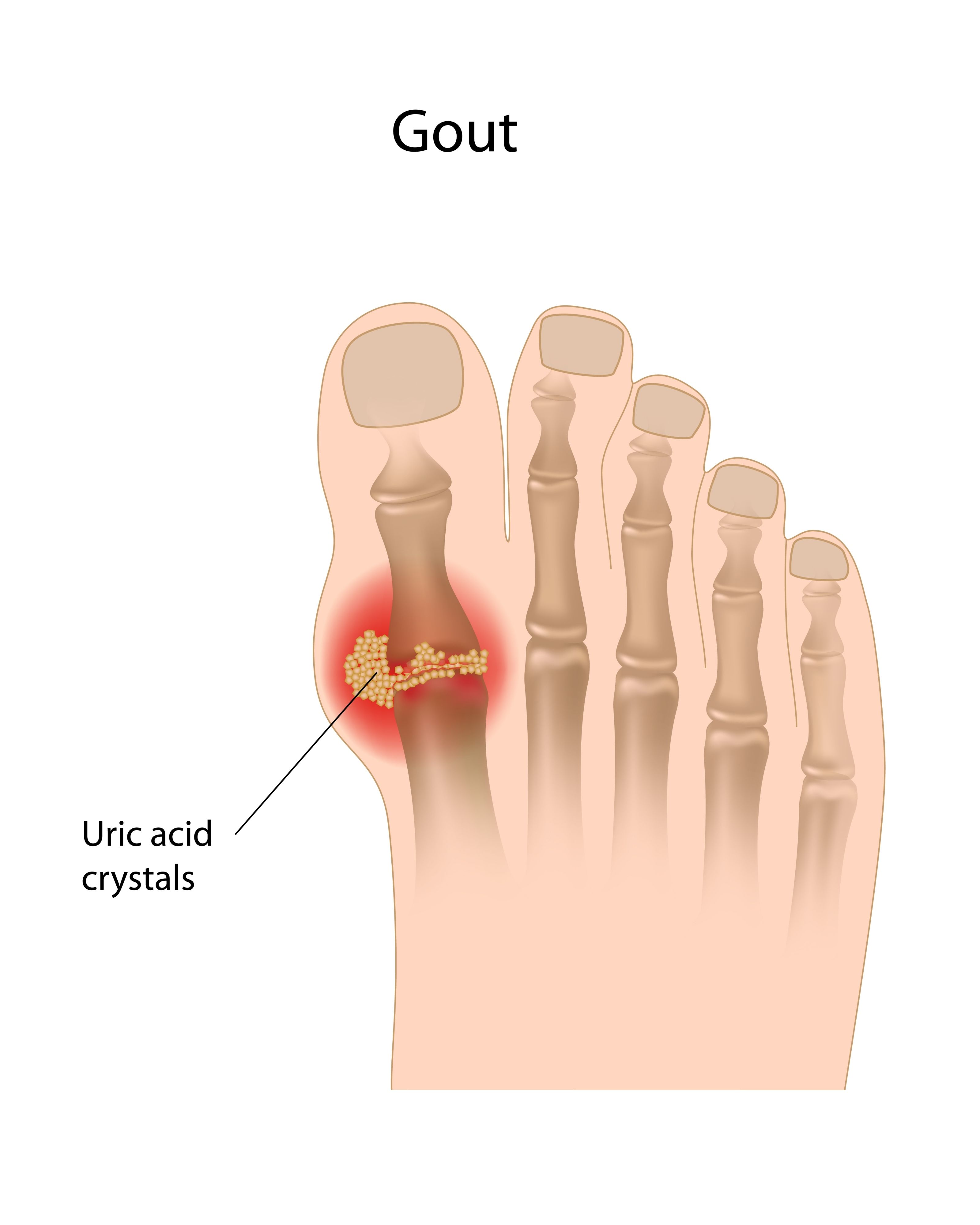Key points
• Gout is a type of arthritis caused by too much uric acid in the bloodstream
Gout is a common form of arthritis characterised by repeated attacks of extreme joint pain, swelling and redness.
While most other types of arthritis develop slowly, an attack of gout happens suddenly, often overnight.
The most commonly affected joint is the big toe, but gout can affect your feet, ankles and knees, elbows, wrists and fingers.

Cause
Gout occurs when uric acid, a normal waste product, builds up in your bloodstream and forms crystals in a joint.
Your body makes uric acid when it breaks down purines, a substance found in your body and in some foods.
Uric acid normally dissolves in your blood, is processed by your kidneys and leaves your body in urine.
If your body makes too much uric acid, or your kidneys can’t clear enough of it, it builds up in your blood. This is called hyperuricaemia.
Having hyperuricaemia doesn’t mean you’ll develop gout - in fact most people with hyperuricaemia don’t go on to develop gout. Because of this it’s thought that other factors such as your genes may be involved.
Other causes of gout can include the use of fluid tablets (diuretics), which can cause your body to retain too much uric acid.
Risk factors
You’re more likely to have a gout attack if you:
-
are male
-
have a family history of gout
-
have high levels of uric acid in your blood
-
drink too much alcohol (especially beer)
-
eat a diet high in purines such as meat, sweetbreads, offal, shellfish, and fructose
-
are overweight
-
use diuretics
-
become dehydrated
-
crash diet or fast.
Symptoms
-
intense joint pain
-
joint swelling
-
skin over the joint may look red and shiny
-
tophi (lumps or crystals that form under the skin) may occur in people who have repeated attacks.
Diagnosis
Gout is diagnosed using a number of tests including:
-
medical history
-
physical examination
-
removing a sample of fluid from the joint. If you have gout, uric acid crystals can be seen under a microscope.
Self-management
During a gout attack, you can reduce pain and swelling by applying an ice pack to the painful joint for short periods of time, and protecting and resting the joint.
Other things you can do to prevent future attacks:
-
maintain a healthy body weight. If you do need to lose weight, make sure your wait loss is gradual as crash diets can increase uric acid levels
-
drink alcohol in moderation and avoid binge drinking
-
drink plenty of water and stay hydrated
-
talk with a dietitian to get advice on a healthy and well-balanced diet
-
exercise regularly – aim to complete at least 30 minutes of physical activity most days of the week
-
work closely with your doctor to prevent further attacks and actively manage your condition.
Where to get help
-
Your doctor
-
Your rheumatologist
-
Dietitian
-
MOVE muscle, bone & joint health
National Help Line: 1800 263 265
Things to remember
-
Gout is a type of arthritis caused by too much uric acid in the bloodstream
-
Excess uric acid settles in joints and causes pain and swelling
-
Gout can be successfully managed with healthy lifestyle choices and medical treatment
How we can help
Need medical information regarding your condition and commonly prescribed treatments? Or assistance navigating the health, disability and social services systems? Contact our nurses on the Help Line on 1800 263 265 or email helpline@move.org.au.
Interested in finding out about our upcoming webinars and seminars and other events? Click here to learn more.
More to explore
The whole or part of this material is copyright to the State of Victoria and the Better Health Channel. Reproduced with permission of the Victorian Minister for Health. Users are permitted to print copies for research, study or educational purposes.




